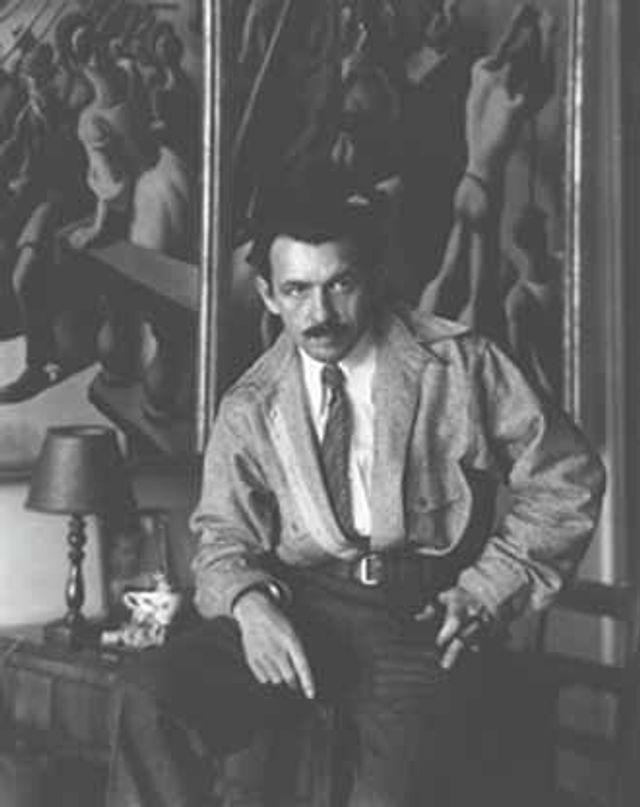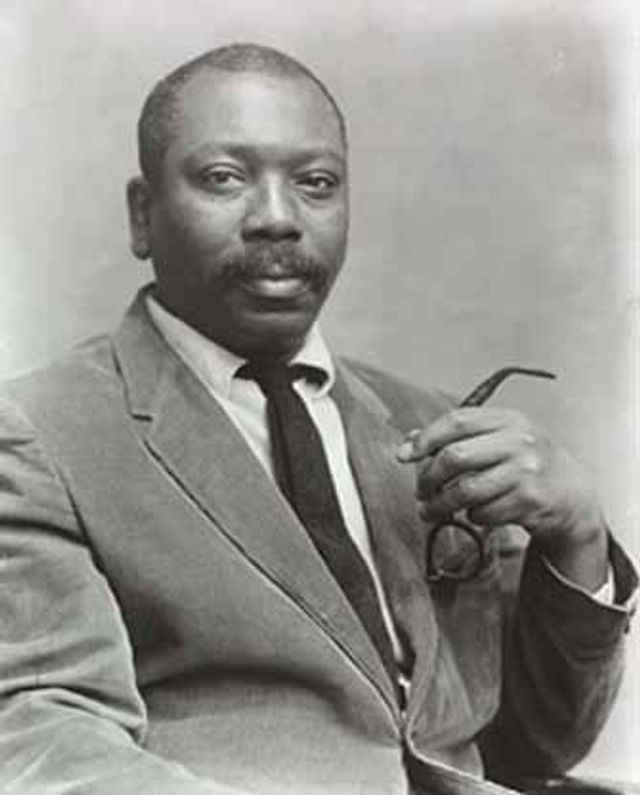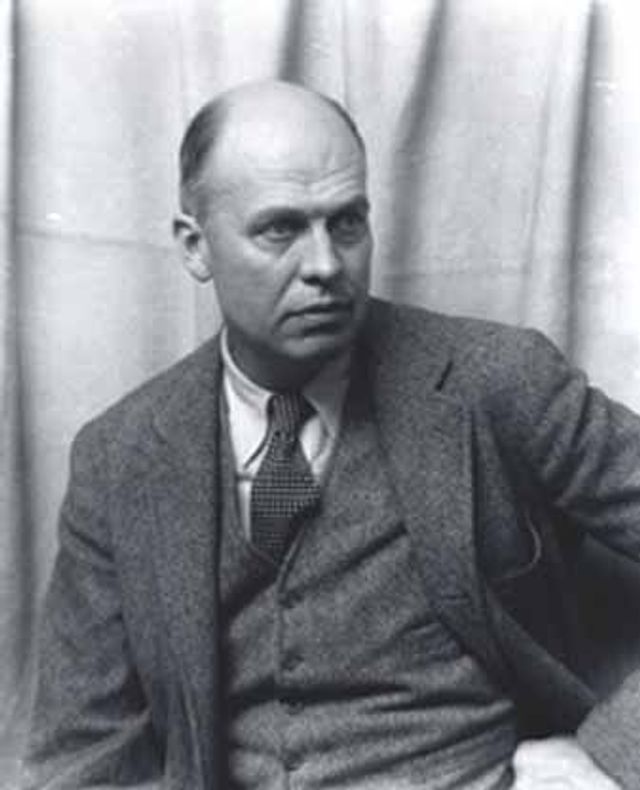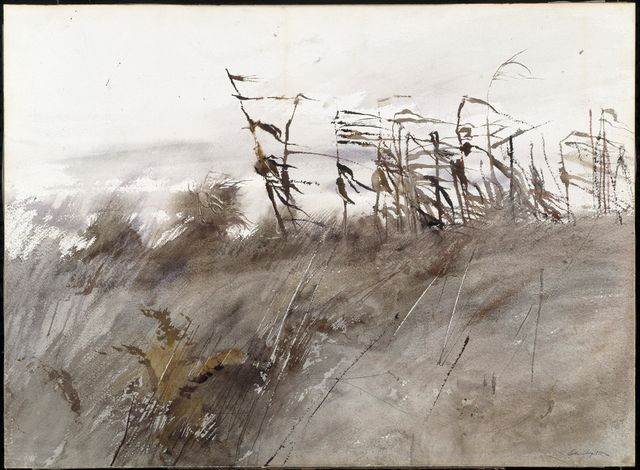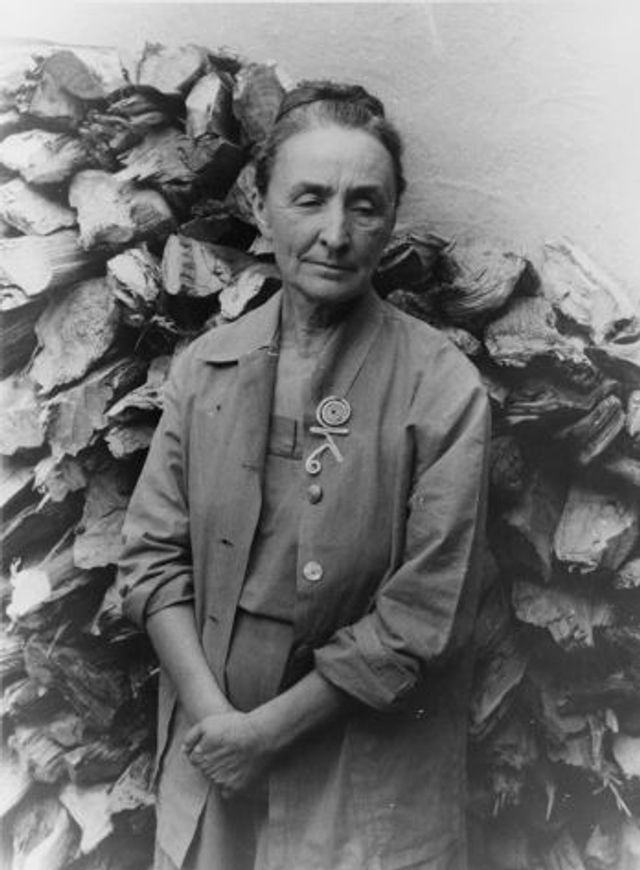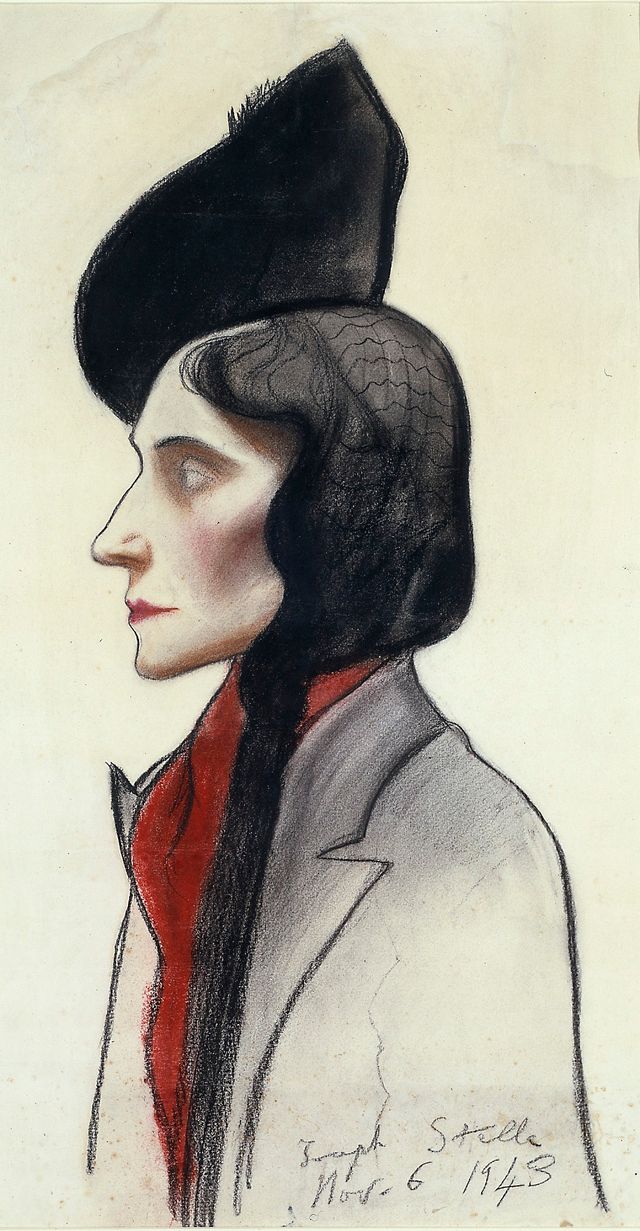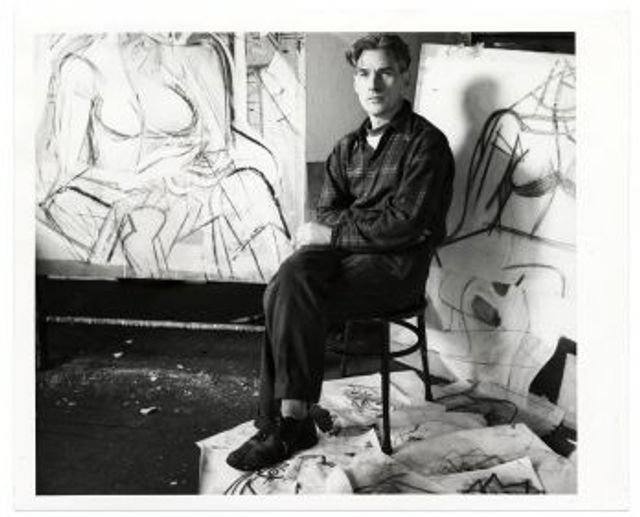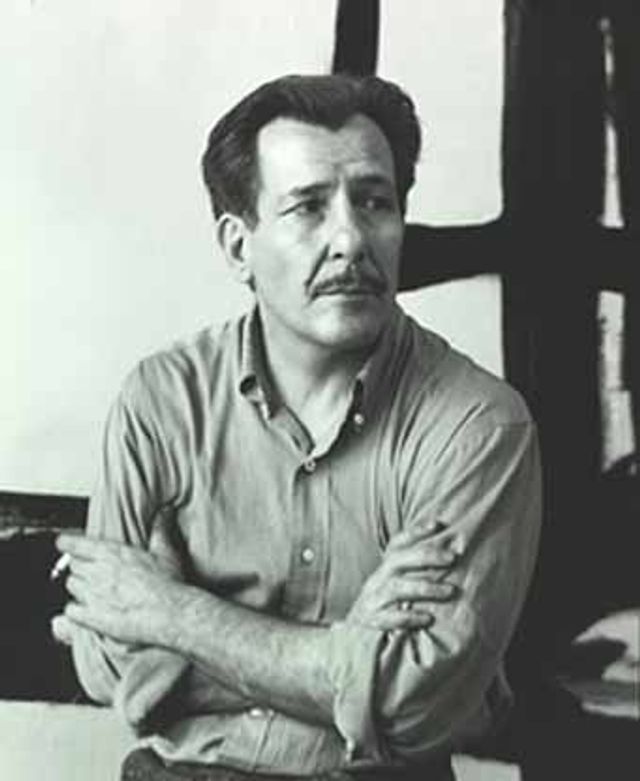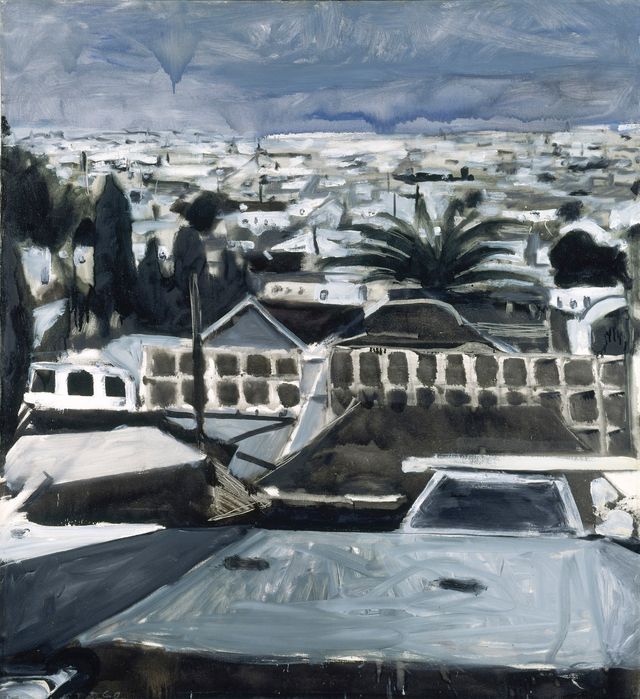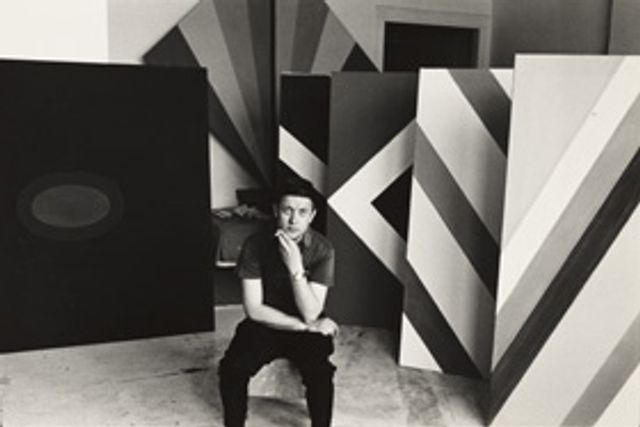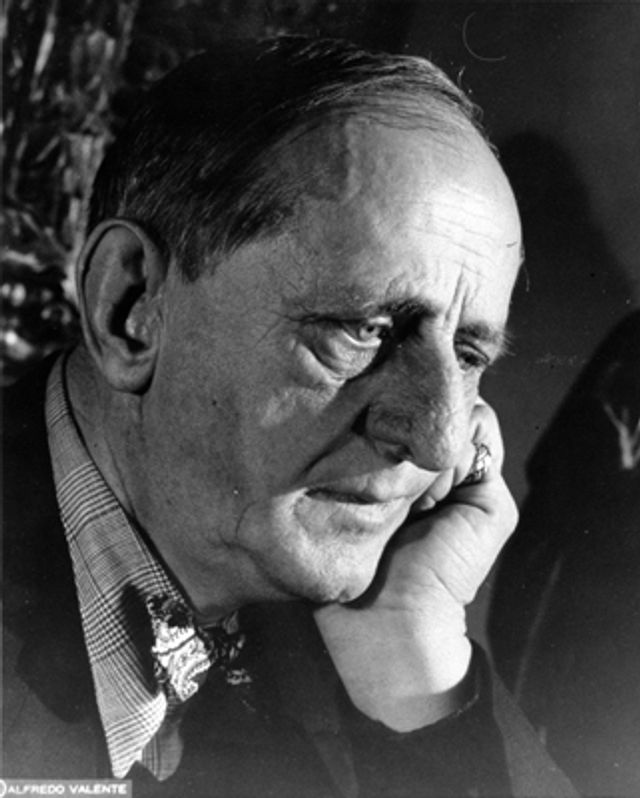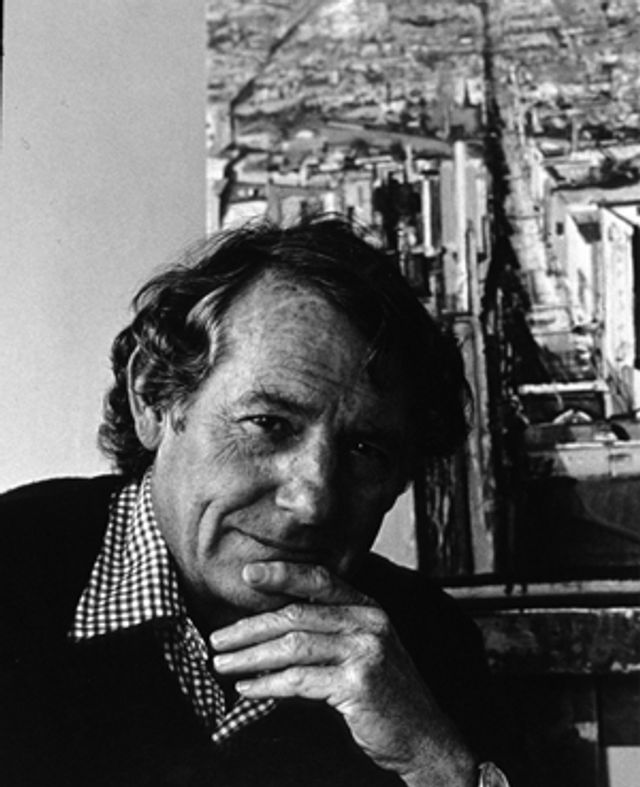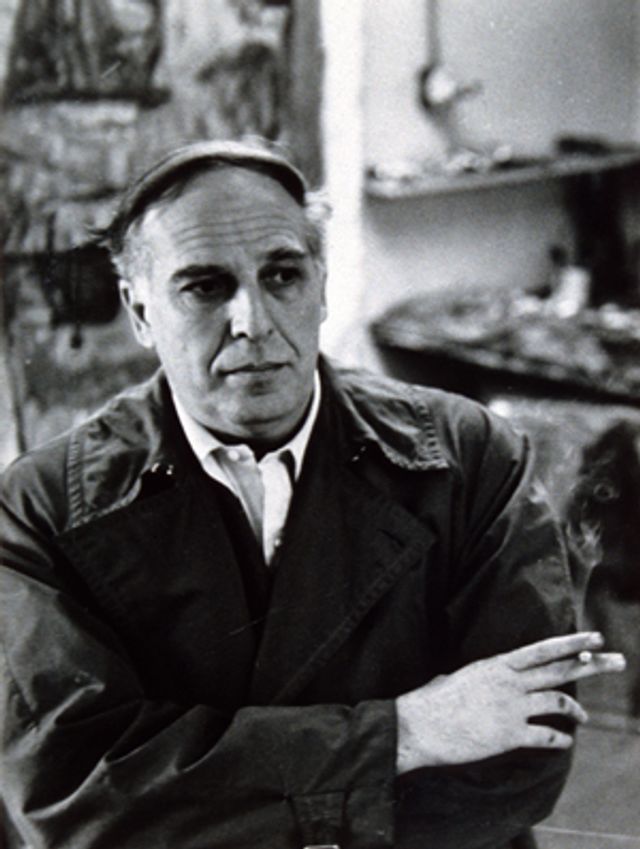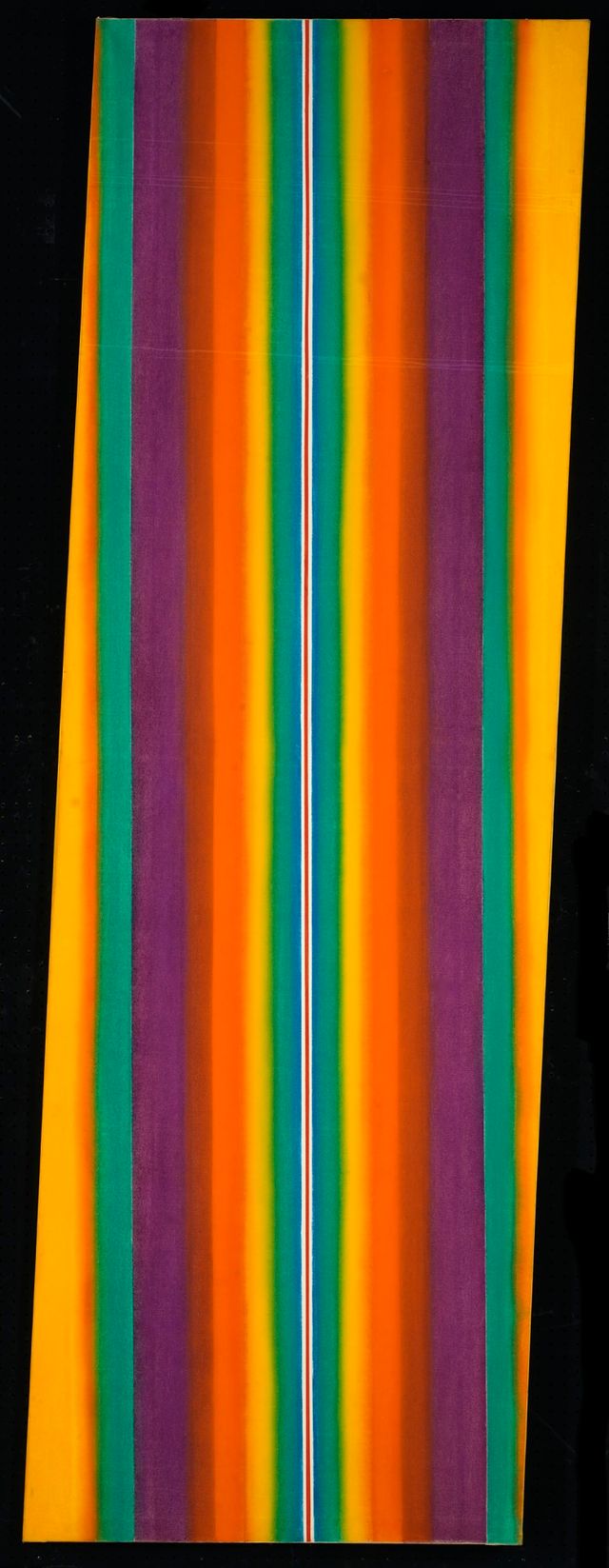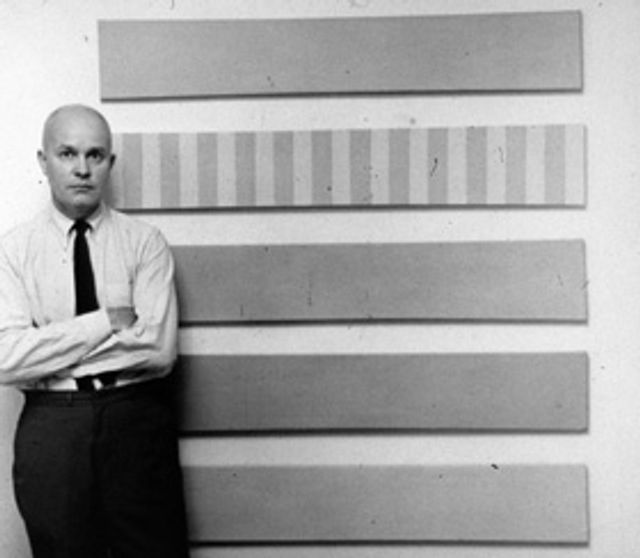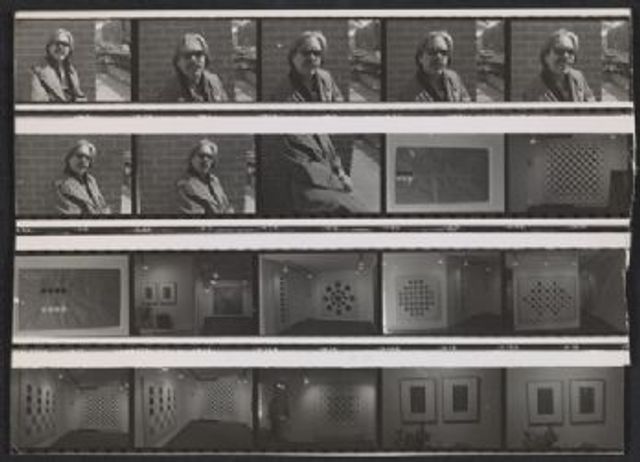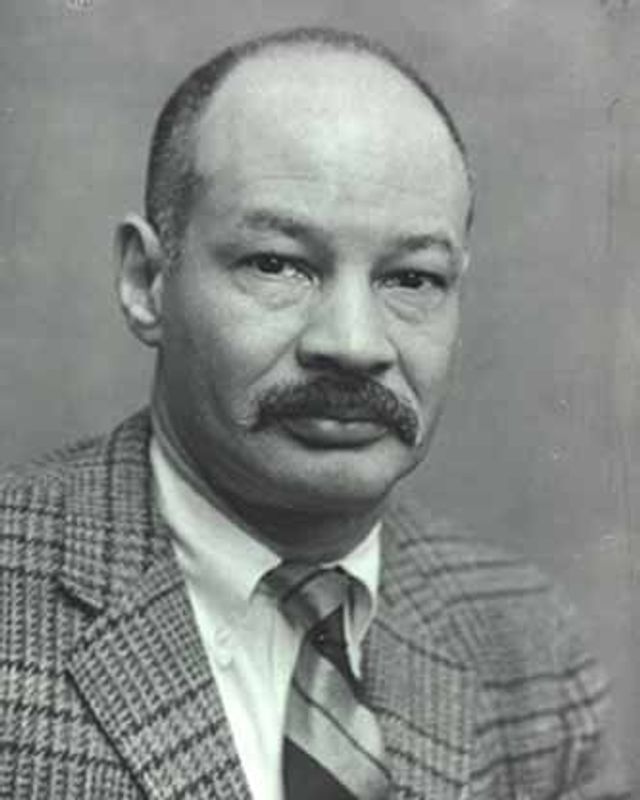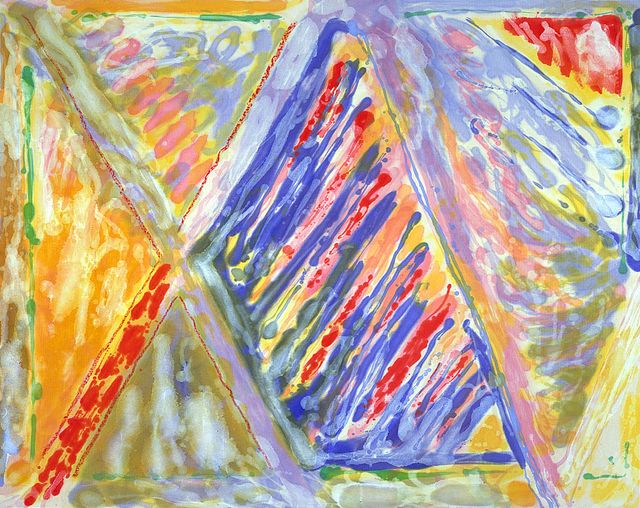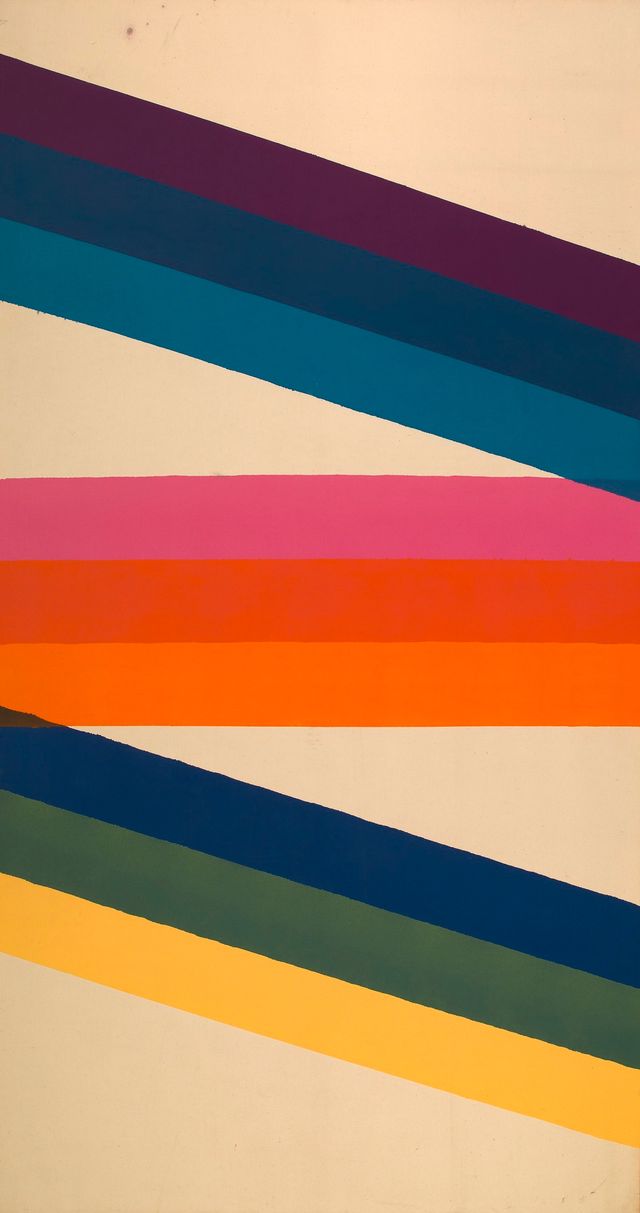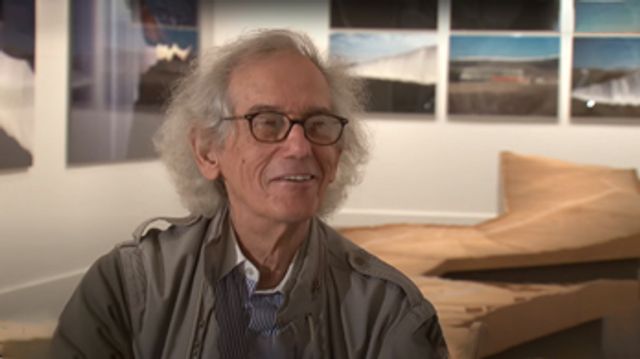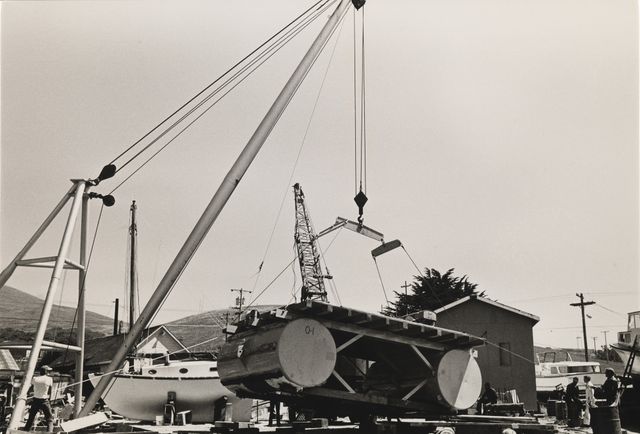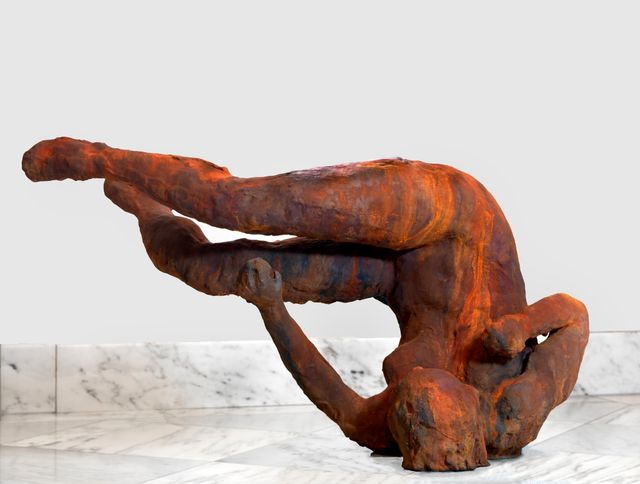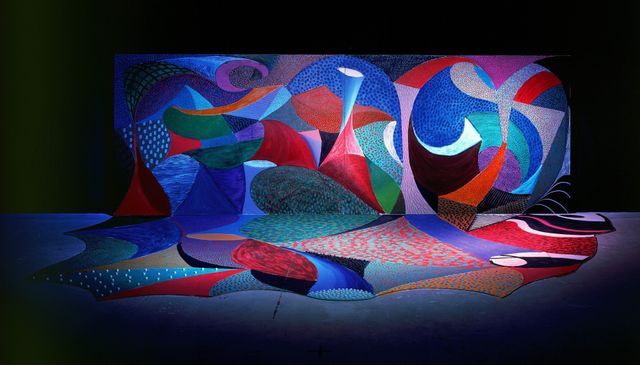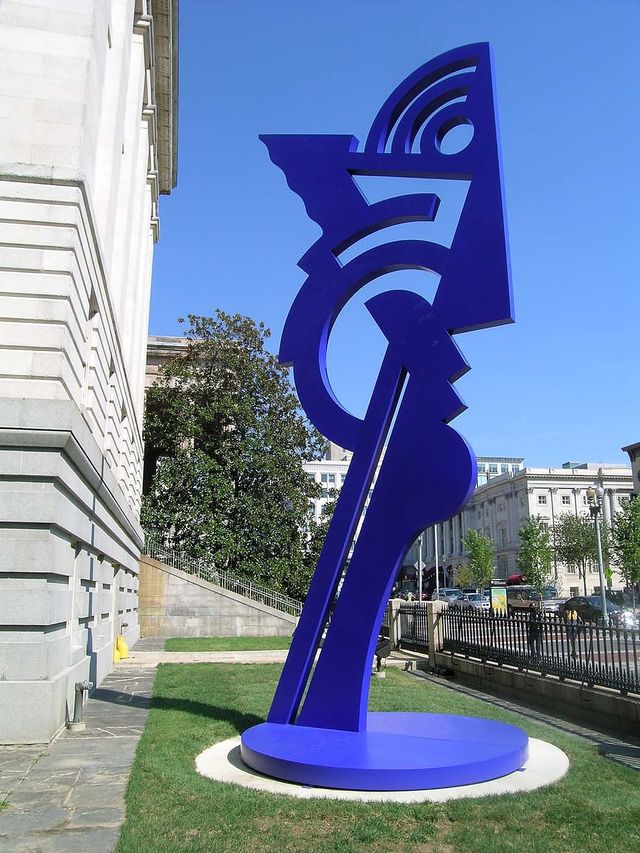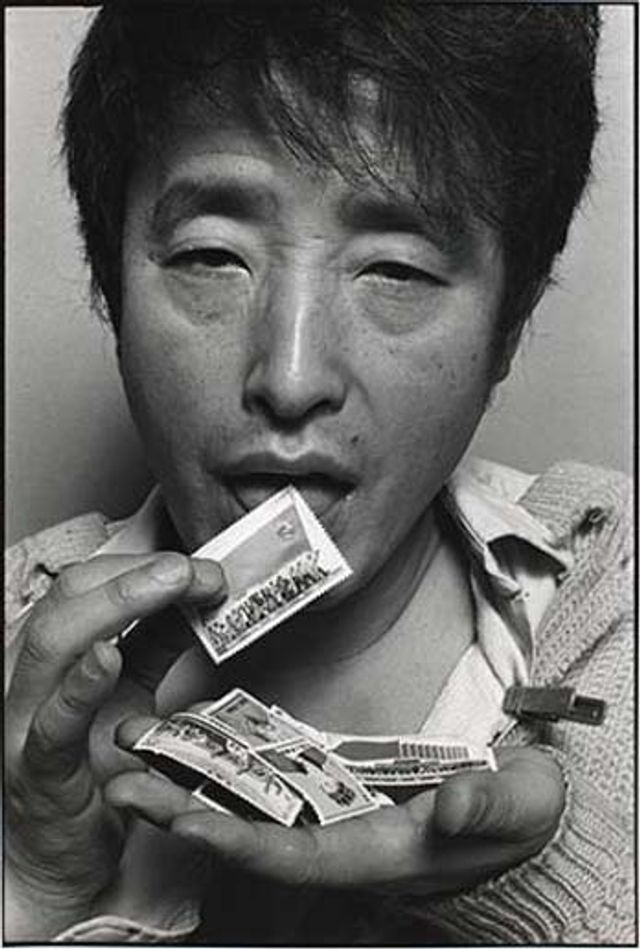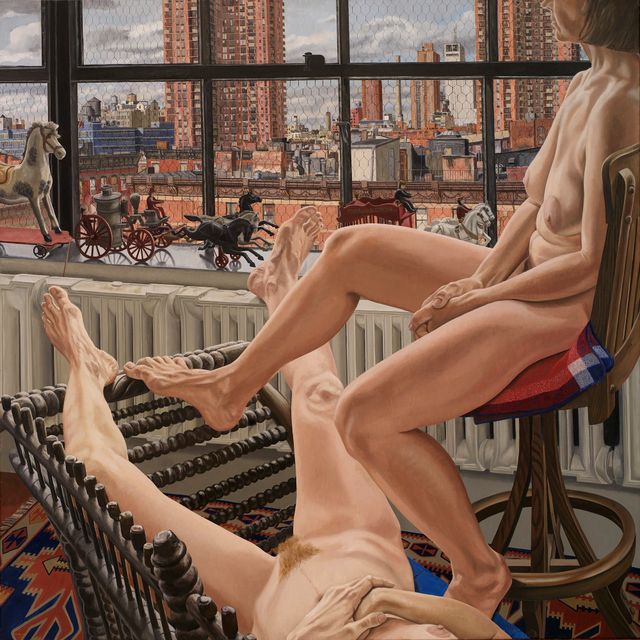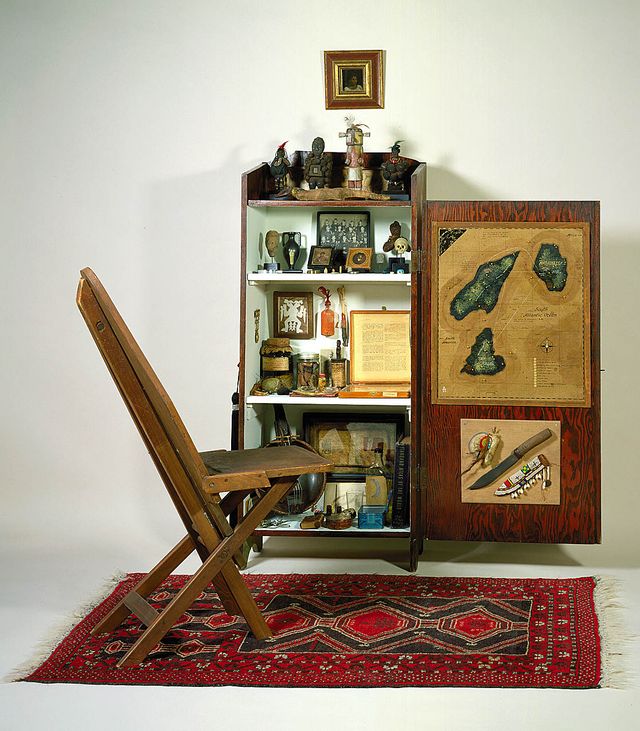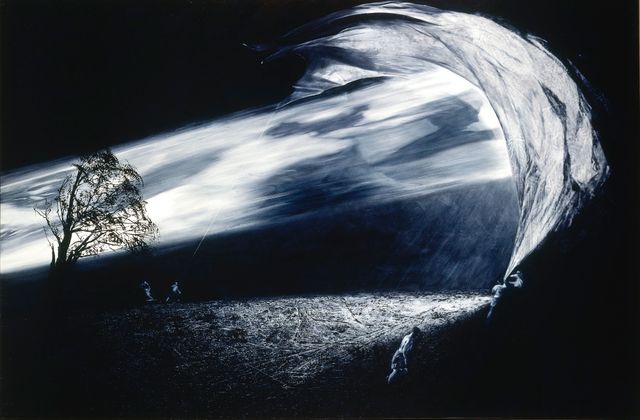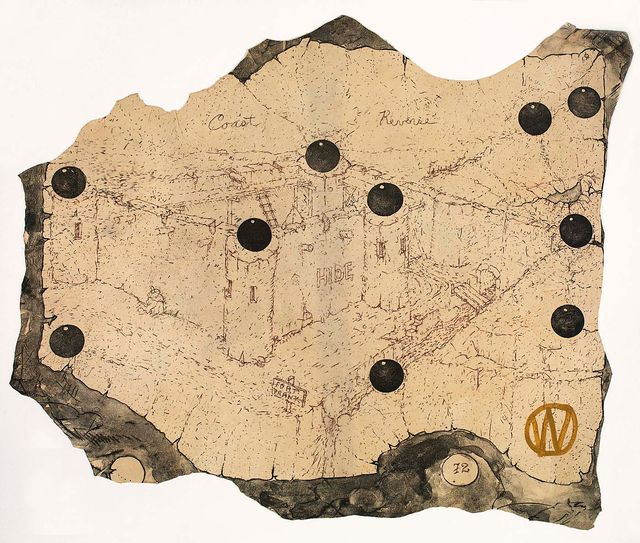
Artists in the twentieth century chose two distinct ways to depict modernism and the excitement of progress—realism and abstraction. Both are well represented in the collection. The museum has the largest collection of New Deal art and murals in the country. Images of jazz and street life, farms and factories, workers and families captured a changing America, from Thomas Hart Benton’s Midwest to Jacob Lawrence’s Harlem. In Cape Cod Morning Edward Hopper captures the post-war mood of anxiety in this stark, ambiguous painting. John Sloan and Andrew Wyeth are among other realist painters in the collection.
Some American modernists found new ways of depicting the spirit of their age. The dynamic rhythms of modern life energized artists like Georgia O’Keeffe and Joseph Stella, while artists such as Willem de Kooning and Franz Kline reveled in the freedoms and frustrations of abstraction, and in turn inspired the next generation of painters such as Richard Diebenkorn and Kenneth Noland. Important twentieth-century artists such as Marsden Hartley, Stuart Davis, Wayne Thiebaud, Alfred Jensen, and Philip Guston explored questions about subject, composition, color, and technique.
The museum has an extensive collection of large-scale paintings by Washington Color School artists, who were conducting innovative experiments with color and form between the mid-1950s and mid-1970s, including Leon Berkowitz, Gene Davis, Thomas Downing, Sam Gilliam, Fel Hines, Jacob Kainen, Howard Mehring, Paul Reed, and Alma Thomas.
In recent years the museum has added to the collection works from the late twentieth century by artists such as Jennifer Bartlett, Christo and Jeanne-Claude, Eric Fischl, David Hockney, Roy Lichtenstein, Nam June Paik, Philip Pearlstein, Renée Stout, Mark Tansey, and William Wiley.
Selected Works
Related Artists
An American scene painter who, along with John Steuart Curry and Grant Wood, was a leading regionalist painter of the 1930s.
Painter. A social realist, Lawrence documented the African American experience in several series devoted to Toussaint L'Ouverture, Frederick Douglass, Harriet Tubman, life in Harlem, and the civil rights movement of the 1960s.
Realist painter who studied with Robert Henri and Kenneth Hayes Miller at the New York School of Art.
Painter, illustrator and teacher. With William Glackens, George Luks, Robert Henri, and Everett Shinn, Sloan was part of the Ashcan School.
Born 12 July 1917, Chadds Ford, Pa., the son of illustrator and painter N.C. Wyeth, who instructed him in art. Family divided each year between Chadds Ford and New England, especially Port Clyde, Maine; a habit Wyeth has continued.
Born in Italy, brought to New York City in 1896, visited Europe in later years. Artist who experimented with a variety of approaches (ranging from Futurism to classic idealism) and techniques (including oils, pastels, and collage.)
Born in Holland, moved to the United States in 1924.
Painter, Abstract Expressionist. Early in his career, Kline painted landscapes, street scenes and portraits. His mature style was abstract, distinctive for its broad, highly charged black strokes on a white ground.
Born in Oregon, lives in California.
Kenneth Noland studied at Black Mountain College in North Carolina, a school that encouraged experimental art. Well into the 1950s, the college supported artists of all kinds, from painters who wanted to dance to musicians who wanted to sculpt.
Painter, printmaker. Born in Lewiston, Maine, Hartley followed his family to Cleveland, Ohio, where he won a scholarship to the Cleveland School of Art. In 1899 he moved to New York, studying first under William Merritt Chase and F.
Pioneer modernist painter who exhibited at the 1913 New York Armory Show. Davis believed that "a subject had its emotional reality," which could be gleaned through an awareness of geometric planes and spatial relationships.
Born in Mesa, Arizona, Wayne Thiebaud became one of the most well-known Pop artists in America. His iconic images of food may have stemmed from his beginnings as a freelance cartoonist in 1939.
Philip Guston was born Philip Goldstein in Montreal, Canada, in 1913 to Russian emigrés from Odessa. The family moved to Los Angeles in 1919. In 1925, he took a correspondence course in cartooning.
[Gene Davis was] a major figure in 20th-century American painting whose contribution was invaluable in establishing Washington, D.C., as a center of contemporary art.
Thomas Downing received his BA in 1948 from Randolph-Macon College in Ashland, Virginia, and then moved to New York City to study at the Pratt Institute for two years.
Gilliam is an innovative color field painter who has advanced the inventions associated with the Washington Color School.
Painter. Hines studied design at the Pratt Institute in Brooklyn, N.Y., and his paintings—in the tradition of the De Stijl movement—often contain strong design elements.
Printmaker who worked in woodcut, silk screen, and other media; his style gradually evolved from the social realism of the 1930s to more abstract portraits in the 1950s and later.
Charles Sullivan, ed American Beauties: Women in Art and Lite
Howard Mehring studied art at Catholic University of America, where he met Kenneth Noland, then an instructor, and Thomas Downing. The two were soon to be associated with Mehring as members of the Washington Color School.
Jennifer Bartlett is the daughter of a pipeline engineer and a fashion illustrator. In the late 1950s she attended Mills College, an unconventional school in Oakland, California, that encouraged experimentation and discouraged textbooks.
1935
Christo: American Bulgarian-born Christo Vladimirov Javacheff, June 13, Gabrovo, of a Bulgarian industrialist family.
1935
Christo: American Bulgarian-born Christo Vladimirov Javacheff, June 13, Gabrovo, of a Bulgarian industrialist family.
Born in New York City, Eric Fischl received his B.F.A. degree from the California Institute of the Arts in Valencia in 1972.
Born in New York City, Roy Lichtenstein attended the Art Students League, where he studied with the painter Reginald Marsh. He then attended the School of Fine Arts at Ohio State University, earning his B.F.A.
Nam June Paik (1932–2006), internationally recognized as the "Father of Video Art," created a large body of work including video sculptures, installations, performances, videotapes and television productions.
As a young girl, Renée Stout became fascinated by the Central African minkisi figural containers she encountered at Pittsburgh's Carnegie Museum while growing up in that city.














